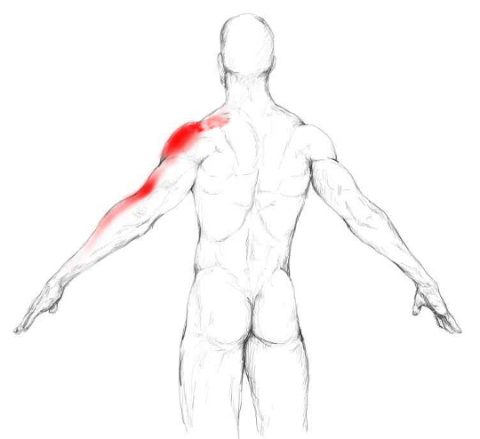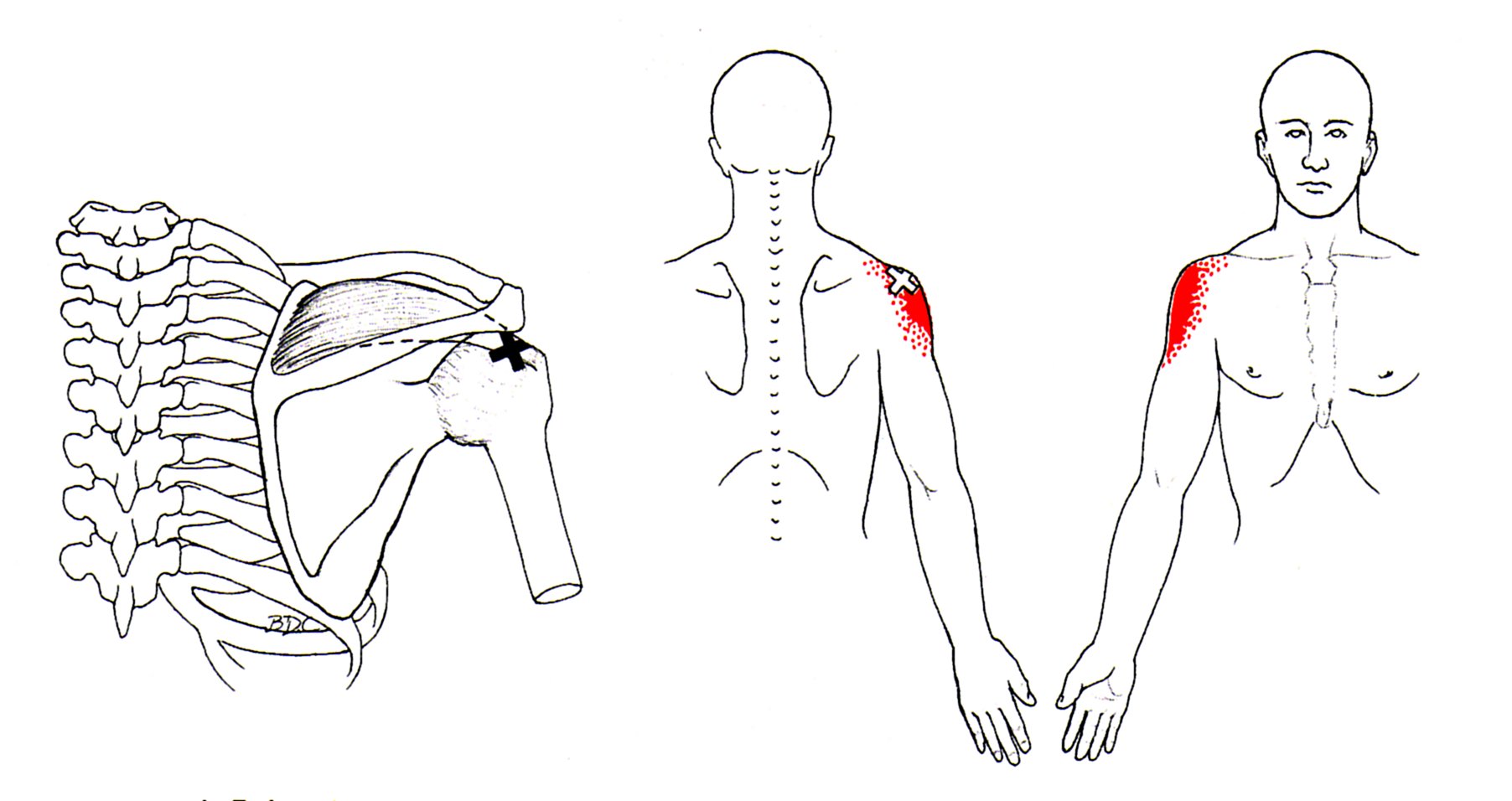
Symptoms of a supraspinatus tear include:
sharp
pain
in the shoulder at the time of injury. Pain when the arm is rotated outwards and upwards. Increased pain and weakness when the arm is raised sideways between a 60-degree arc. Read more on how to diagnose a rotator cuff injury.

There are many different characteristics of the condition, but a clinical presentation may combine the following symptoms: pain when raising the arm forward, sideways, or above shoulder height. Repetitive activities that involve shoulder movement. Burning sensation in the shoulder. Weakness when lifting up an object or pushing a door open. Disrupted sleep due to the pain. Difficulty performing routine activities such as brushing hair or putting a jacket on. Referred pain into the upper arm. Symptoms of other shoulder injuries can mimic the symptoms of supraspinatus tendon injuries, but the most common is inflammation of the subacromial bursa, clinically known as bursitis.
What is the supraspinatus muscle?
Although tendinitis can occur in any of the rotator cuff tendons, the supraspinatus tendon is the tendon most at risk of injury. Due to its location at the top of the shoulder - between the joint cavity and the rigid bony arch of the shoulder blade (acromion) - the tendon is at risk from irritation, wear and tear, and/or the nerve becoming trapped in the soft tissues of the shoulder (impingement).
 The attachment of the muscles and tendons to the acromion provides the leverage that helps to lift the weight of the arm away from the body (abduct). As most of use use our arm for many daily activities, it is a fairly common injury; if this tendon injury is ignored, it will likely worsen and can lead to chronic (long term) tendinitis.
The attachment of the muscles and tendons to the acromion provides the leverage that helps to lift the weight of the arm away from the body (abduct). As most of use use our arm for many daily activities, it is a fairly common injury; if this tendon injury is ignored, it will likely worsen and can lead to chronic (long term) tendinitis.
The supraspinatus muscle is one of the most common troublemakers when it comes to shoulder pain. It belongs to the rotator cuff group. People that often stress this muscle too much are painters, rock climbers, piano and violin players. In a nutshell, people that work with elevated arms for prolonged periods of time. Of course, other people may overload this muscle, too. So, if you have pain in your shoulder, make sure have a look at it.
A rotator cuff injury is never pleasant. It will cause pain, weakness and may severely limit your shoulder’s range of motion. Toward the back of the shoulder is the supraspinatus tendon and muscle. The supraspinatus is one of the most common locations for tears or ruptures of the tendon, as well as tendonitis. The shoulder is a complex joint. Inside the rotator cuff, a group of muscles and tendons connect the upper arm bone, the shoulder blade and the collarbone, which allow us to raise and rotate our arms. Any shoulder injuries, like a supraspinatus tear or even a rotator cuff tear are likely to worsen without treatment, similar to shoulder tendonitis.
There are multiple proposed etiologies for rotator cuff tendonitis. It is important to appreciate the difference between external and impingement mechanisms as these result in differing clinical presentations and underlying rotator cuff pathologies. Traditionally, neer's hypothesis of a predictable breakdown in three stages is still commonly used. He proposed a predictable breakdown in three stages: edema and hemorrhage, fibrosis and tendonitis, and eventual tendon rupture. He reported that overhead activities and heavy labor might predispose a patient to this pathway. Smith et al. Showed lower blood supply in pathologic supraspinatus tendons when compared to their healthy counterparts, suggesting that there may be a significant vascular component to tendon breakdown as well.